| Советские гитары :: Форумы :: Articles :: Bass guitars | |||
|
|||
 Jolana Alexis Super 2 bass guitar Jolana Alexis Super 2 bass guitar |
| Автор | Добавил |
| shlepakoff |
| ||
ilya   Зарегистрирован: 29.06.2009, 18:33 Местонахождение: Houston-Москва Сообщений: 3971 | (original article located here: [link]) Along with the Alexandra semi-acoustic, Jolana Alexis bass is rightfully considered the most gorgeous instrument available back in the USSR. These are hard to come by throughout Russia because not a lot of them had been brought over to this neck of the woods… Still, they do resurface. This little bass was selling with an attitude and a price tag of a mere 1000 rubles. Some flaws are: the original tuners had been replaced, one of the string height adjustment screws, the guitar jack plate, and the nut were all missing, and the pickup wasn’t working.  I brought the bass home, cleaned all the dirt off and assembled it. It was by sheer accident that I was able to find the tuners, but, hey, coincidence or not, it’s all good as long as I get to have the originals! I fitted the broken pickup with a coil out of a Ural pickup. It didn’t make things any worse but then again, my only other option would be to use a pickup without a coil since there was no chance in hell I was going to be able to find another one of these, and in this particular one the coil wasn’t wrapped or anything, just bare wires sitting in the shell. I inserted a regular bolt into the bridge saddle for the time being and used a plastic nut. I tightened the truss rod. Wired the switch. Fashioned a jack plate and installed it. Strung the guitar and started playing. 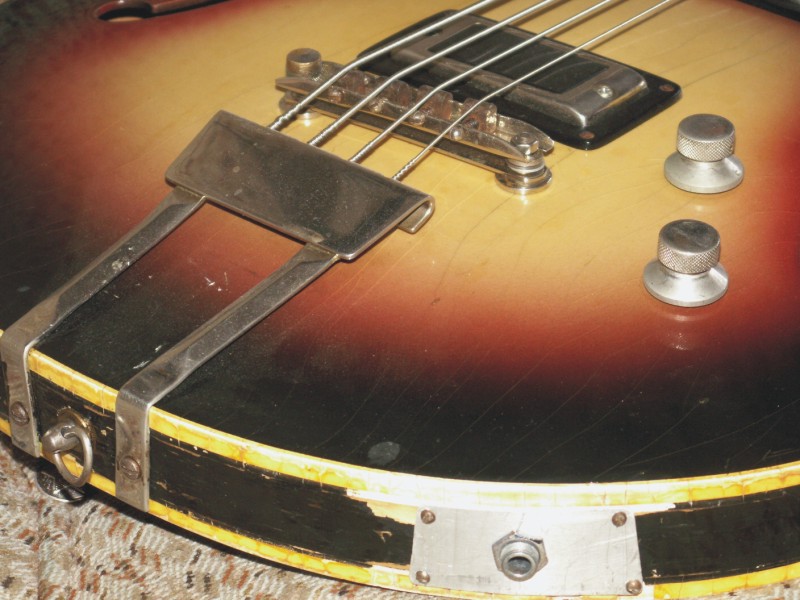 Alright!!! The sound is what one would expect from a semi-acoustic bass guitar: dense, with great frequency clarity, though a little trebly. Moderate amount of hum. The neck is a Czech classic with awesome frets, a real comfort to play. I’m thinking it’ll soon get a lot of stage time. Let’s take a closer look! 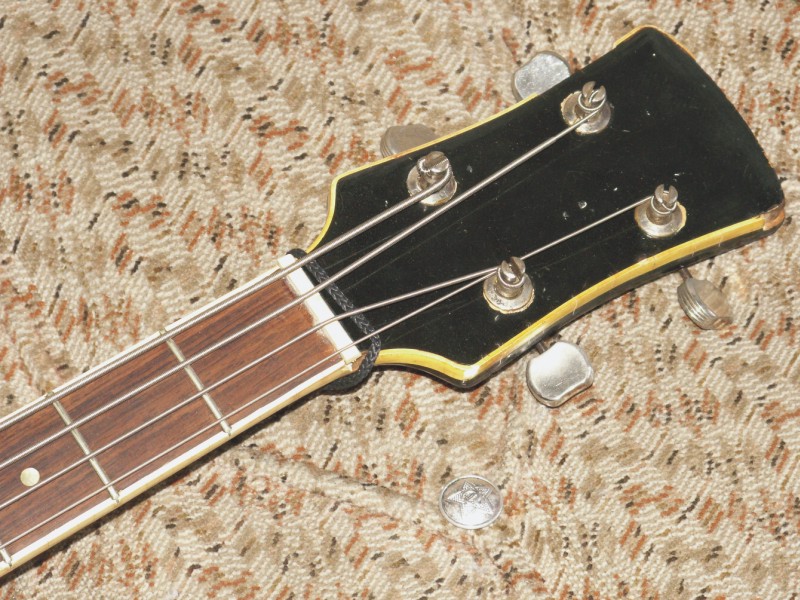 Body. A semi-acoustic, with f-holes. It’s thin yet really wide, so it will be an effort to find a case that fits. The wide binding has yellowed out over time and has begun to crumble (a problem), and much of the finish has peeled off on the sides, cracking lengthwise on the back and the soundboard. Nothing too hazardous and it doesn’t look too bad – a condition worthy of rock-n-roll – still, it’s frustrating. This is a result of the instrument being handled in a flat-out nonchalant manner. The back, the soundboard and the sides are made of good-quality, thick plywood, there is substantial bracing inside – reliability and robustness all around. The neck seat tapers down enough that you can see the neck heel. The neck is attached using 4 screws via a thick metal neckplate that also holds a large strap button. The idea behind the hoop that acts as the other strap button is lost on me. At first glance, it appears to be threaded but that turns out to be farthest from the truth: it screws out to about one centimeter and then sticks. The finish is opaque sunburst. Neck. It feels very thick, and is painted over, fully concealing the wood grain. It is quite comfortable, thanks largely to the top-notch frets. No zero fret. Dot inlays. The same covered tuners as the ones on Diamand and Iris basses and on down the Jolana bass lineage. The headstock is shovel-shaped, with 2X2 tuning machines. The binding is real thick and also prone to crumbling... With the truss rod adjustment at heel, it’s a pleasure to handle. 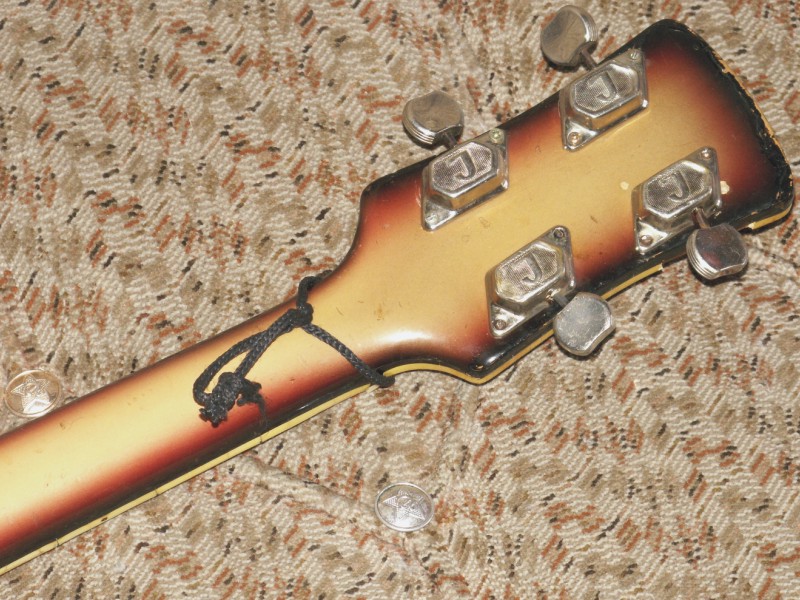 Tuning machines. Like I said, these are standard issue Jolana bass tuners, hassle-free if used properly. Tailpiece. Two L-shaped bars, positioned lengthways. On one end they have slots used for attachment to the body using screws. On the other end is the string mounting bar proper. The original used to have a decorative nameplate in the shape of a letter “J” but some evil barbarians just had to break that off. What a shame… The bridge is a floating design, two height adjustment screws and metal saddles with pieces of felt glued on the bottom for smoother movement and less buzzing. Not the best solution sustain-wise, though. 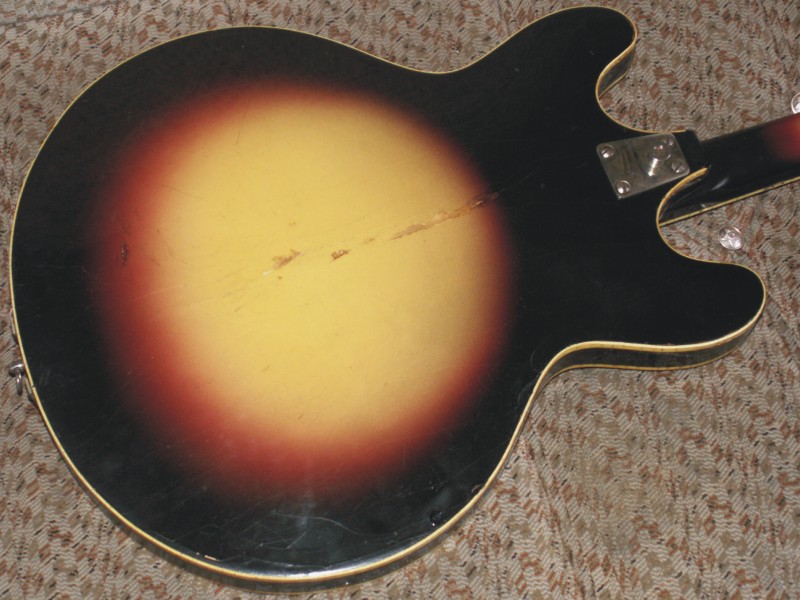 Circuitry. Two pickups, of a design similar to the ones found on Tornado though noticeably wider. Inside there is a real big coil wound right over a bare magnet, with no coil protection of any kind. Which is what caused the pickup’s demise… Resuscitation was conducted by means of gutting an extra Ural pickup that I was lucky enough to have sitting around. It does sound more or less acceptable. Next is the selector switch – thankfully, all it does is switching, no filtering; there was a model that had two such switches, the second one being the one that had filters. This system harks back to the Ural circuitry, i.e., that of the Jazzmaster origin. Next and last in the signal’s path are volume and tone controls. This route terminates in a standard jack. The turned metal knobs are attached to the shaft using set screws. And so, the bottom line is as follows. The bass is quite a comfortable instrument that needs no getting used to. Everything is pretty straightforward and functional, executed with elegance and at a high level of quality. The sound is good, plenty suitable for gigging and recording. The looks… Brace yourselves: newbies will praise the sound you make on this bass, using words like “that old Gibson is freakin’ awesome!” only to turn their backs on it once clued in to what it really is. Well, that’s a common phenomenon. Then again, you can fake it and make a claim that “this here Gibson is the real McCoy!” The thing is, the way the Czechs printed the logos, they would naturally wear off as a result of an instrument being used as prescribed. 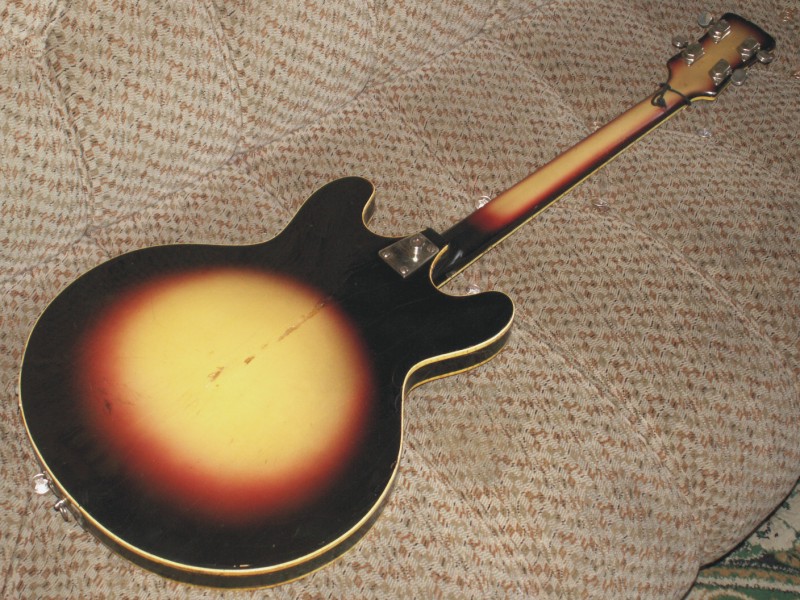 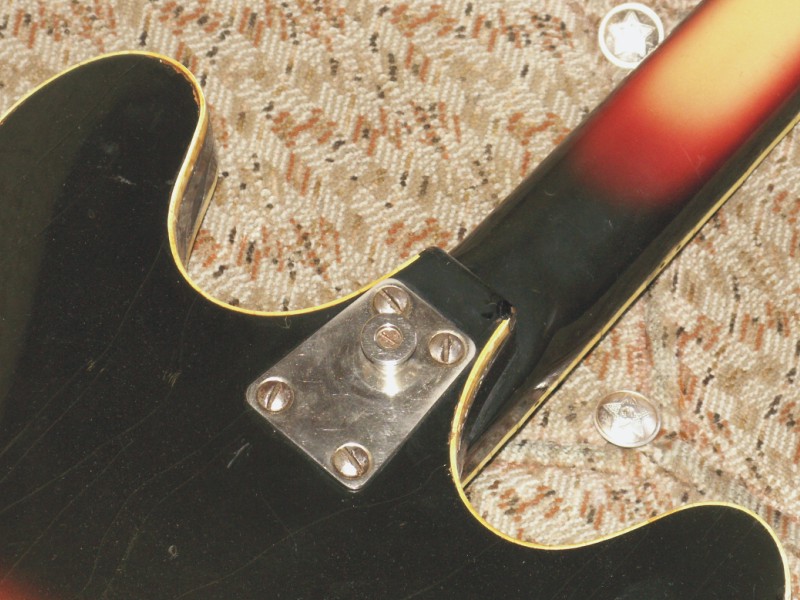 In addition to this model there were also single-pickup models made as well as a modification that came equipped with the kind of pickups that Kolor had (the shape was similar to Kolor, too) and a tone selector switch. The model featured here is the hardest to come by around here. Don’t know about the Czech republic… Ask around, if you’re interested. Truly yours, Bassist Kajf Translated by Ilya Shlepakov, 2011 © [ Редактирование 23.03.2011, 16:44 ] Ваше шило, наше мыло: [link] [link] | ||
| Наверх |
|
| Модераторы: violet, EjiK, Басист Кайф, Я-Ха, Izol, SPA, shlepakoff, byte_crow |
Powered by e107 Forum System
| Мини-чат |
Вы должны войти, чтобы отправлять комментарии на этот сайт - пожалуйста, либо войдите, либо - если вы еще не зарегистрированы - щелкните  Skyworker79 Skyworker7915.04. : 15:30 Надеюсь,кто то из форумчан успел приобрести и мы увидим хорошие слайды! [link] Посмотреть все сообщения (118947) |
| Поиск Советские гитары |
| Счетчики |
|
|
© 2006 - 2024 SovietGuitars.com - Общество Коллекционеров Советских Электрогитар. Сайт не является СМИ. 18+
Техническое обслуживание сайта осуществляется веб-студией «Код-А»


